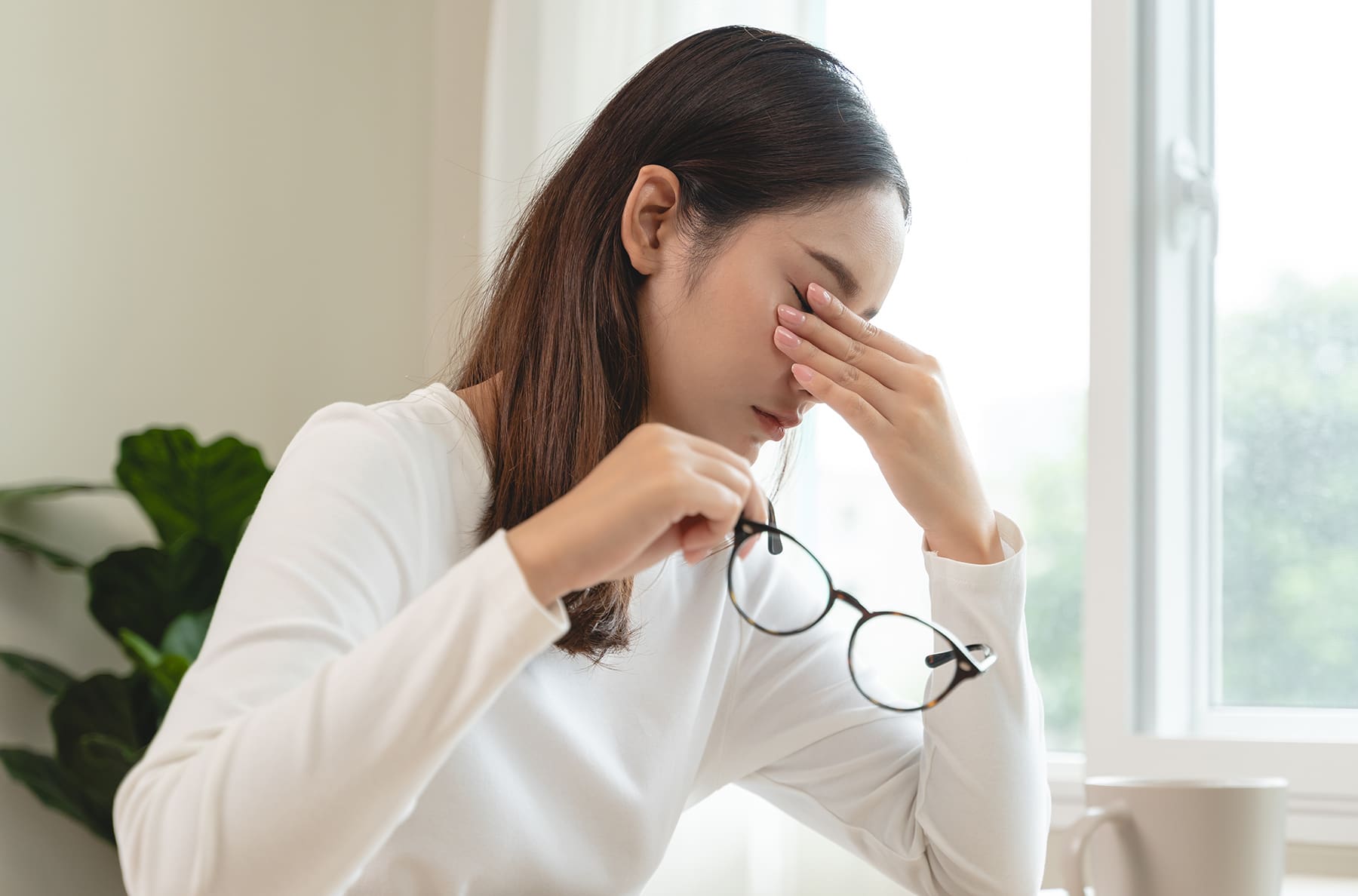Reviewed By Youth Vision
Reading time: 4 minutes
Many people mistake dry eyes for allergies, but these are separate conditions with different causes and treatments.
If your eyes are itchy, red, or irritated, you might assume seasonal allergies are to blame. However, dry eye disease is a chronic condition that requires different care than ocular allergies.
Here’s how to tell the difference and when to seek treatment.
Table of Contents
Key Takeaway
Dry eyes result from inadequate tear production or rapid tear evaporation, causing burning, stinging, and blurry vision that worsens in dry environments. Eye allergies, triggered by environmental allergens, cause itching, watery eyes, and swelling, often accompanied by nasal congestion and seasonal flare-ups.
Dry Eye Symptoms vs. Eye Allergy Symptoms
Dry eye disease happens when your eyes don’t produce enough tears or when tears evaporate too quickly. This leads to:
- Eye dryness: A persistent dry, scratchy, or gritty sensation.
- Blurred vision: Vision fluctuates and improves with blinking.
- Sensitivity to light: Uncomfortable glare, especially in bright conditions.
- Burning or stinging sensation: A sign of inadequate lubrication.
- Tear evaporation: Linked to issues with meibomian glands, responsible for oil production.
- Extreme dryness at night: Worsens in air-conditioned environments.
- Contact lens discomfort: Reduced tear volume makes lenses feel irritating.
- Foreign body sensation: Feels like something is in your eye.
- Redness and eye fatigue: Often worsens with excessive screen time.
Dry eye disease is often linked to environmental conditions, medical conditions like thyroid disease or rheumatoid arthritis, and lifestyle factors like being in an air conditioned environment, exposure to allergens, and low humidity.
Eye Allergies: Triggered by Allergens
Eye allergies (also called allergic conjunctivitis) are caused by exposure to allergens like pollen, dust mites, pet dander, and mold. Symptoms include:
- Itchy eyes: A hallmark symptom that dry eye disease doesn’t cause.
- Watery eyes: A reaction to common allergens like tree pollen and ragweed pollen.
- Red, swollen eyelids: Swelling caused by environmental allergens.
- Nasal congestion: Often present with nasal allergies.
- Allergic shiners: Dark circles under the eyes from congestion.
- Papillary conjunctivitis: Small bumps on the inside of eyelids.
- Mucous discharge: Thick, stringy eye discharge not found in dry eye disease
- Symptoms of allergies worsen with seasons: Especially during peak allergy seasons.
- Immediate reaction to allergens: Symptoms worsen in direct contact with dust, pets, or pollen.
How to Tell the Difference
1. Symptoms timing: If your symptoms worsen in certain environments (like outdoors during high pollen count), allergies are likely the cause. If discomfort is consistent, dry eye disease may be the issue.
2. Itching vs. burning: Itching is a primary sign of allergies, while burning and a gritty sensation are more common with dry eyes.
3. Tearing patterns: Eye allergies cause excessive tearing, while dry eyes cause inadequate tear production or rapid tear evaporation.
4. Response to treatment: Artificial tears help dry eye symptoms but do little for allergies. Allergy drops or oral antihistamines work for allergies but may worsen dry eye symptoms.
Treatment Options for Dry Eyes and Eye Allergies
Managing dry eyes involves improving tear secretion and protecting the healthy tear film:
- Preservative-free artificial tears: Help keep eyes moist
- Punctal plugs: Reduce tear evaporation by blocking tear drainage
- Prescription drops: Help increase tear production
- Lifestyle changes: Reduce excessive screen time, avoid air conditioning, and increase humidity
- Omega-3 supplements: Support tear glands and tear volume
Eye Allergy Treatment
If severe eye allergies affect daily life, targeted treatment for eye allergy symptoms is necessary:
- Allergy drops: Reduce inflammation and ocular redness
- Oral antihistamines: Help with nasal congestion, but can worsen dry eyes
- Mast cell stabilizers: Prevent histamine release to reduce eye allergy symptoms
- Avoidance of allergens: Reduce exposure to dust particles, pet dander, and common allergens
- Cold compresses: Soothe swollen, itchy eyes
When to See an Eye Doctor
A comprehensive eye exam can determine whether you have dry eye disease, eye allergies, or another eye condition. An accurate diagnosis ensures you get a personalized treatment plan for relief.
Schedule an Eye Exam at Youth Vision
If you’re unsure whether you have dry eyes or allergies, Youth Vision can help.
Schedule a comprehensive eye exam today at any of our locations:
- Denver Youth Vision, located at 1400 Grove Street, Denver, CO 80204, 303-825-2295
- Aurora Youth Vision, located at 14251 E. 6th Avenue, Aurora, CO 80011, 303-343-3133
- Thornton Youth Vision, located at 9674 Washington Street, Thornton, CO 80229, 303-953-880
- Hampden Youth Vision, located at 7400 East Hampden Ave. Unit C1, Denver, CO 80231, 720-866-9906


